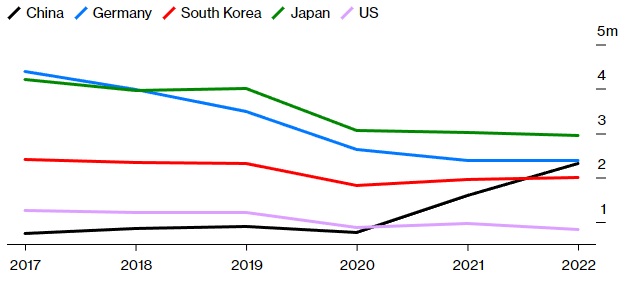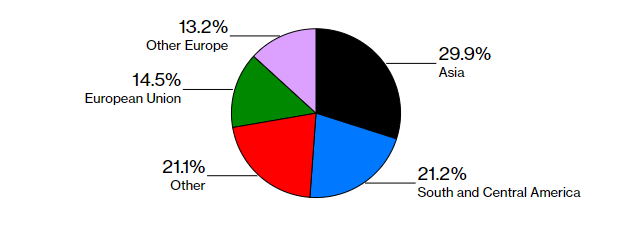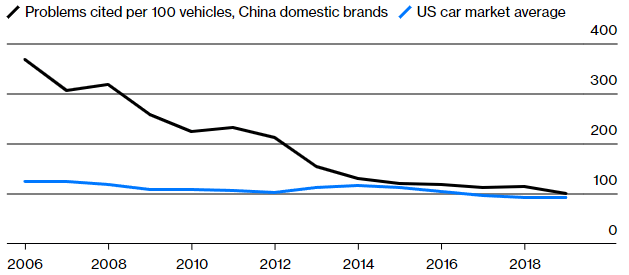China is Quietly Taking Over the Global Auto Industry (PDF)
China is set to become the second-largest exporter of passenger vehicles, driving a transformation in the global auto industry and fuelling trade disputes with its partners and rivals. The figure has tripled since 2020, according to figures from the China Passenger Car Association, reaching over 2.5 million last year – just behind Germany, which have seen a decrease in exports lately. This puts China ahead of countries such as the United States and South Korea, signifying the emergence of a powerful competitor to existing automotive powerhouses.
Chinese companies have assumed an influential role in the markets of the Middle East and Latin America, while in Europe, models such as those from Tesla Inc. and Volvo—which is owned by a Chinese firm—are especially popular. The BMW iX3, whose production is limited to China, has also earned recognition. At the same time, domestically produced vehicles from brands like BYD Co. and Nio Inc., with support from Warren Buffett’s Berkshire Hathaway Inc., are increasingly present internationally as well, especially in more established nations including Australia.
Annual Passenger Car Exports

Recently, China has stepped beyond the production of relatively basic low-cost consumer electronics, appliances and Christmas toys. Instead, Chinese companies have embraced the challenge of building intricate products that are capable of meeting the demands of tough markets. This shift has been a key factor in propelling the country from communism to its current status as an economic force to be reckoned with. According to Harvard University’s Growth Lab’s Economic Complexity Index (ECI), which considers a nation’s export breadth, China now ranks 17th globally – a dramatic improvement from its 24th spot ten years ago.
Despite the fact that car exports rose during the Coronavirus pandemic and Chinese carmakers are mostly focused on Europe, Asia, and Latin America, the surge has mostly gone unnoticed in the US. Although 40,000 Buick Envision compact SUVs were sold in 2021 by General Motors Co. in China, political tensions, tariffs, and subsidies aimed at boosting domestic electric vehicle production have diminished their appeal.
China’s Passenger Vehicle Exports by Destination, 2021

Entering Europe has long been an aspiration for Chinese companies that first appeared at automotive events on the continent in the early 2000s. Issues surrounding safety saw their ambitions halted around 2007, but the rise of automation and standardization now means those issues are a thing of the past. Thanks to improved quality in the last decade, Chinese cars have been able to pass European safety tests with flying colors, while China’s stringent air pollution regulations also ensure they can comply with emission standards.
Number of Problems in Chinese Cars Converged With US Market Average

China has established a reputation for being a reliable manufacturing hub for industry giants, but it is now taking the lead on EVs. Local car manufacturers have found the electric platform relatively easy to master compared to internal combustion engines.





